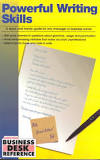Does Your Blog Have Skeletons in its Verbal Closet?

You’ll find skeletons in verbal closets, Bill Brohough says, and he devotes an entire book to helping us do just that in Unfortunate English: The Gloomy Truth Behind the Words You Use. Brohough alerts readers to the “improprieties, disgusting notions, licentiousness, and other foul thoughts” we speak daily without realizing it.
- I love “reading around and learning around”, as I call it, and advise all blog content writers to do the same. Ideas are all over the place, all of the time, but we’ve got to see and hear those ideas, learning everywhere and from everyone, making connections between our own experience and knowledge and Other People’s Wisdom. There are several ways in which I think Brohough’s collection of verbal “skeletons” and his caution to writers about using words can be used to improve blog marketing content for different types of businesses:1. to define basic terminology or give basic information to readers: The expression “caught red-handed”, Brohough explains, originated in the 1400’s and meant caught with blood on one’s hands. Another speculation, he says, is that the term traces back to 800 B.C., when guilt or innocence was tested by putting the accused’s hand on a red-hot axehead.
A nutrition company or health practitioner might use this piece of trivia to discuss the importance of including various colors of food in the diet, so as to include different phytonutrients advising blog readers to include strawberries as a source of folic acid and cherries which are high in fiber..
2. to explain why this practitioner or business owner chooses to operate in a certain way: A printer or web designer might discuss the way red brings text and images to the foreground, and stimulates buying decisions. A fashion clothing business or professional makeup salon might offer advice on using red accessories as an accent color for basic black or brown business suits..
As bloggers, we face the challenge of churning out creative writing over extended periods of time, and word “histories”offer fresh ways to approach our subject.
It’s worth searching your blog “closet” for skeletons!

 Learning that someone had posted a negative remark about him on social media,
Learning that someone had posted a negative remark about him on social media, 


Follow us online!